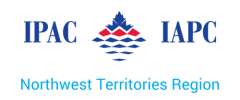Book Review – Dying from Improvement – Inquests and Inquiries into Indigenous Deaths in Custody by Sherene Razack
The following book review is brought to you by Northwest Territories Chapter of the Institute of Public Administration of Canada.
As part of its Book Review Forum, the IPAC NWT Regional Group is pleased to present the following review: Dying from Improvement – Inquests and Inquiries into Indigenous Deaths in Custody by Sherene Razack, Toronto, University of Toronto Press (2015).

Dying from Improvement – Inquests and Inquiries into Indigenous Deaths in Custody is a devastating critique of how Indigenous deaths are treated and examined in Canada.
Coroners’ inquests and inquiries have served an important role in society for centuries, bringing public scrutiny to deaths so that dangerous circumstances and practices can be identified and changed to prevent future deaths. Recommendations made by coroners and inquest juries have moral weight, and these hold government authorities accountable for promoting meaningful change.
But do inquests and inquiries serve their purpose? Sherene Razack presents a serious challenge to this assertion in Dying from Improvement. She advances the case that inquests and inquiries systematically fail to investigate the indifference and dehumanization experienced by Indigenous persons in interactions with authority, which she presents as relentless, brutal and completely normalized in Canadian society.
In advancing this disturbing thesis, she describes inquests and inquiries as a colonial exercise in typecasting Indigenous deceased as inherently flawed, diseased individuals, beyond help or hope by the time they come into contact with police and medical professionals. According to Razack’s analysis, the legal theatre of the inquest or inquiry bolsters stereotypes of Indigenous inferiority and victimhood, all while presenting a stage for medical and legal experts to demonstrate superiority through diagnoses and rationalizations. The process does not generate accountability. Long chronologies of systemic abuse go unexamined. As such, Razack suggests the resulting recommendations essentially allow the system to demonstrate benevolence without affecting anything more than superficial change.
The book considers several case studies to support the thesis. For example, Razack cites the case of Frank Paul, an Indigenous man who was detained by Vancouver Police, unable to stand or walk. Paul died after being released in an alleyway instead of being lodged in cells or taken for medical treatment. There is also the case of Paul Alphonse, who died in circumstances indicating possible physical trauma resulting during interactions with authorities. Razack also uses the case of Anthany Dawson, an Indigenous man who died after being restrained by police in downtown Victoria. Then there are the notorious “starlight tours” from Saskatchewan, involving Indigenous persons being removed from the city and abandoned on isolated highways in freezing temperatures by members of the police force.
With each example, Razack explores how unchallenged assumptions and jurisdictional limits can prevent probing questions from being asked. She points to histories of official studies and reports that institutionalize the idea Indigenous persons are vulnerable and inferior. If it is simply assumed Indigenous deceased are weak and vulnerable, drunk or psychotic, does this justify or explain indifferent or callous treatment by police or medical professionals? Do easy explanations allow inquests and inquiries to focus on detention policies, emergency room protocols, cell checks and monitoring, without conducting any serious examination of root causes? Razack’s relentless theme is that inquests and inquiries often serve to whitewash current and historical wrongs with a veneer of compassion.
Razack does not limit er critique to historical inquests and inquiries. She highlights the risk of getting it wrong while trying to get it right . Inquests and inquiries may include an Indigenous prayer or healing circle. Recommendations often go to increasing cultural sensitivity. Razack is clearly of the view these measures amount to nothing more than symbolic gestures, particularly if Indigenous participation continues to be managed and constrained, silenced, or allowed only in “tightly scripted moments of ceremony” (p. 8).
Dying from Improvement will be difficult reading for coroners, inquest counsel, police, social workers, medical practitioners and expert witnesses. It challenges us to consider whether we are truly and meaningfully considering, in the case of an Indigenous person’s death in custody, the deceased as a full member of society. If not, are we reinforcing colonial stereotypes where we have already written off the deceased and accepted nothing could be done? Do we over-emphasize medical pathology, at the expense of considering the long-term effects of authorities’ interactions with the community and the deceased? How are Indigenous voices spoken and heard?
The questions raised by Razack are unsettling. They are nonetheless critical and timely, following the report of the Truth and Reconciliation Commission of Canada, and pending conclusion of the National Inquiry into Missing and Murdered Indigenous Women and Girls.
This review was authored by Sheldon Toner, lawyer and mediator and adjudicator with Dragon Toner Law Office in Yellowknife, Northwest Territories (NWT). He has served as coroner’s counsel in numerous inquest in the Northwest Territories and Nunavut, and is chairperson of the NWT Human Rights Adjudication Panel. This review was prepared for Northern Public Affairs magazine by the Institute of Public Administration of Canada’s (IPAC) NWT Regional Group. Please note the views and opinions expressed in this article are those of the author and do not necessarily reflect the policy or position of IPAC. Many thanks to the University of Toronto Press for providing a courtesy copy for review.

